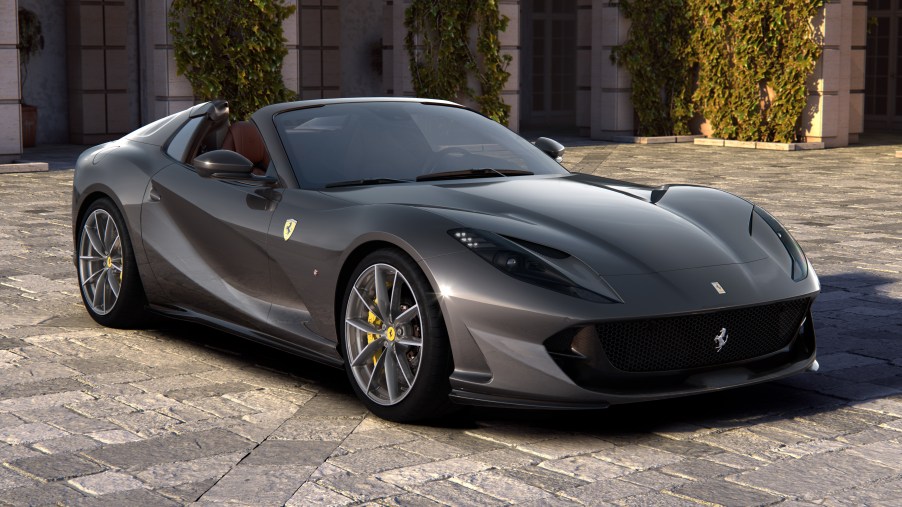
Ferrari 812 GTS: Seven Cool Facts
Ferrari just announced the 812 GTS, and just like the 812 Superfast it’s based on, the 812 GTS combines incredible power with a beautiful design. And to save you time, we’ve sifted through all the official information to highlight the seven most important things you need to know.
1. First of its kind since the 1970s
The Ferrari 812 GTS is the first drop-top, front-engine V12 made by Ferrari since the 365 GTS/4 Daytona Spyder, which was first introduced in 1969, ended production in 1973. There have been special editions that fall in this category, such as the SA Aperta and the F60 America, but these versions never made it to production. Ferrari fans in search of a convertible will now be able to skip the V8 and go straight for a V12.
2. 812 GTS Power
Ferrari claims that the 812 GTS is the most powerful production convertible in the world. Its 6.5-liter V12 makes 790 hp and 530 lb-ft of torque. The engine will also rev all the way to 8,900 rpm before redlining. The 812 GTS also comes equipped with the technology necessary to help the driver harness all of the 812’s power. That includes the Ferrari Peak Performance package and the most recent version of Ferrari’s Side Slip control technology.
3. Super Fast?
This car is the convertible version of the 812 Superfast, which means it has the same exterior and interior dimensions. It also shares the same, powerful engine. It can go from 0-to-62 mph in less than three seconds and has a top speed of 211 mph. Shorter gear ratios and a seven-speed dual-clutch automatic transmission allow for faster shifts and improved responses to throttle inputs. While it may not have Superfast in its name, it’s still super fast.
4. Emissions Compliant
Ferrari had to get a little creative to ensure the 812 GTS complied with emissions regulations. The car includes a gasoline particulate filter, and its high-pressure injection system reduces the number of particles emitted before the catalytic converter gets going. The 812 GTS also uses a stop-start system to mitigate the gasoline demands.
5. Continuing a legacy
Ferrari has a long history of building front-engined V12 two-doors. That includes the 166 MM, which was built in 1948. It showed its value in 1949 when it won the Mille Miglia and 24 Hours of LeMans endurance races. The 1969 GTS4, the last front-engine V12 produced prior to the 812 GTS, was also called the Daytona Spyder in honor of Ferrari’s 1967 sweep at the 24 Hours of Daytona.
6. 812 Convertible
One of the more complicated elements of the design is the 812 GTS’s retractable hardtop. The retractable hardtop can open and close in 14 seconds and is operable while the car is moving at up to 28 mph. Unlike some convertibles, though, Ferrari says the size of the cockpit and the structural rigidity are not compromised. Ferrari has creatively found space for roof storage under a tonneau cover positioned between a pair of buttresses.
7. Form Meets Function
The 812 GTS is able to put down all that power due in part to a focus on aerodynamics. To enhance the 812 GTS’s aero, the design includes a triplane wing as part of the rear diffuser. This creates increased downforce. The car also includes drag-reducing air vents at its rear. Optimizing airflow was an essential consideration when the roof is retracted. The car uses an air channel and aerofoil behind the seats and in front of the buttresses. This helps vent interior air pressure buildup. There is an electric screen in the rear that creates a barrier for wind. If the top is up, the screen can be lowered to allow additional airflow.
There’s no doubt the 812 GTS comes fully stocked with power and performance. It also has a price tag to match. Orders are expected to launch later this year with a price point around $400,000.


